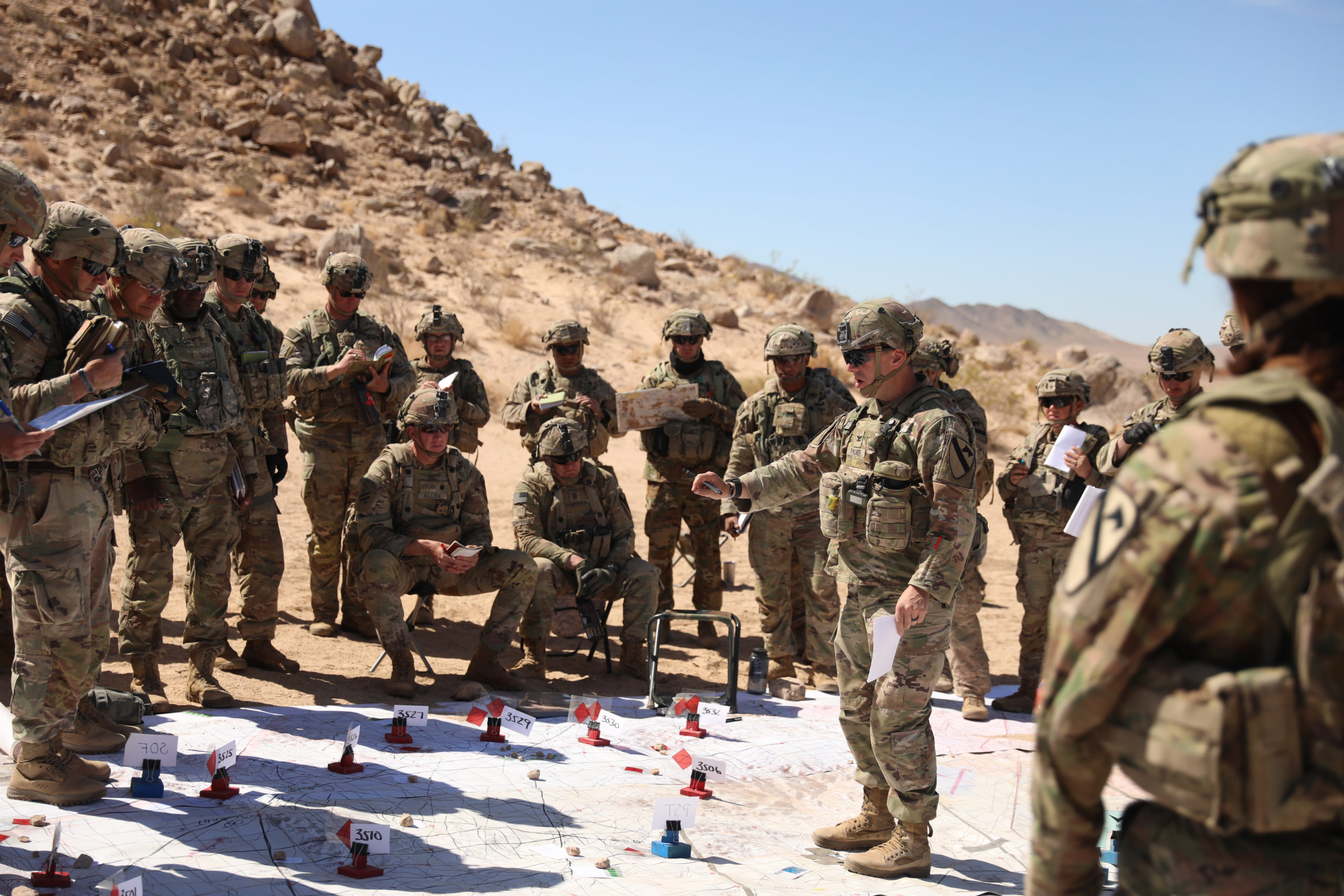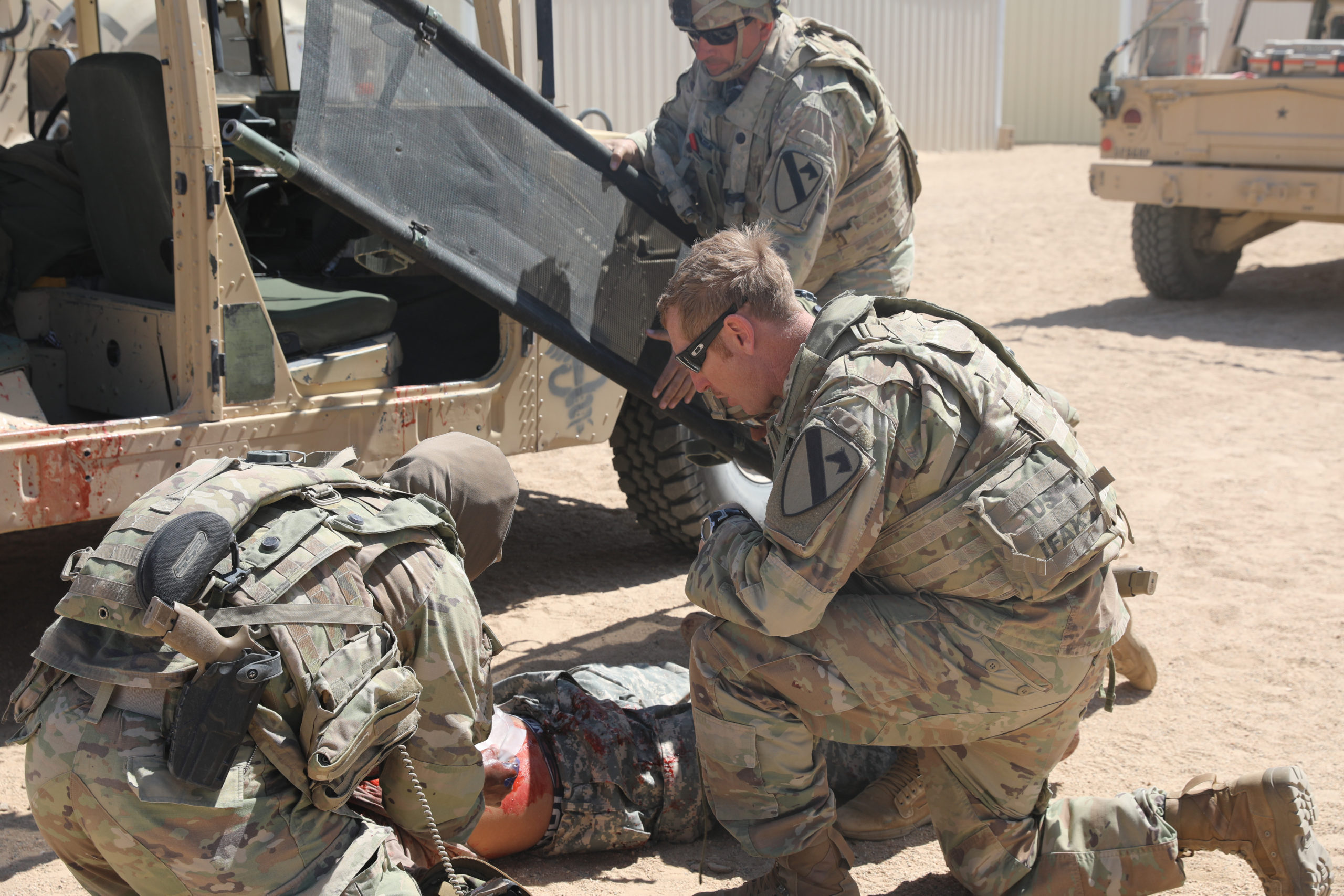Story By U.S. Army Lt. Col. Jennifer Bocanegra, 1st Cavalry Division Public Affairs Office
Fort Irwin, CA- At the beginning of April, 2nd Brigade Combat Team “Black Jack”, 1st Cavalry Division deployed Troopers, vehicles and equipment from Fort Hood (Now designated Fort Cavazos), Texas to the National Training Center to test the brigade’s war fighting skills during a 21-day combined arms training rotation.
This past weekend, the 1cd command team, Maj. Gen. John Richardson, commanding general, and Command Sgt. Maj. Shade Munday, division command sergeant major, travelled to NTC to visit with leaders and Troopers taking part in the training. This gave the division command team an opportunity to obtain feedback on the brigade’s training experience.
“The brigade is doing exceptionally well. They are focusing on combined arms at the battalion and brigade level while getting additional training sets and repetitions at the platoon and company levels,” Richardson said. “Black Jack Brigade is proving to be a learning organization and they are learning very quickly.”
During the visit, both Richardson and Munday spent three full days driving through the training area to observe operations order briefings, combined arms rehearsals and after actions reviews while also setting aside time to engage with NTC observer-controller-trainers and Black Jack leaders to gain a well-rounded understanding of the brigade’s progress against the opposing force and areas for improvement.
“It’s been great to come out here and see Black Jack Troopers getting after realistic and challenging training at the National Training Center,” Munday said. “Opportunities like this give our Troopers a chance to train as we fight and it also gives them a chance to see themselves to accurately assess their capabilities.”
The command team also spent time at each battalion’s tactical operations center where they checked on Troop morale, rewarded outstanding performers and offered guidance on maximizing training opportunities during the rotation.
Richardson also spent time assessing how battalion commanders were integrating their combined arms capability including fire support, electronic warfare and sustainment. Col. Ian Palmer, Black Jack brigade commander, said he is looking for subordinate leaders to leverage combat capabilities including the additional Stryker squadron from 3rd Cavalry Regiment and aviation assets from 4th Infantry Division which the brigade received to enhance their war fighting capability and training experience.
“That’s actually been one of the highlights of this rotation. We’ve been able to compliment the best parts of each type of formation by placing combat capability where they are needed,” Palmer said. “We’ve got large amounts of sustainment, fires and maneuver assets and I’m looking for leaders to employ combat power that will enable the brigade to be successful in achieving the mission objectives.”
The National Training Center commander, Brig. Gen. Curtis Taylor, has worked to incorporate modern equipment including drones and satellites to simulate current combat environments and further test units’ capabilities during their rotation.
“The biggest thing about the National Training Center is you can do everything to scale. The ability to combine all of the war fighting functions against a thinking enemy like the 11th Armored Cavalry Regiment allows you to do things you just can’t do at home station,” Richardson said.
During the brigade’s final battle early Sunday morning, the brigade worked collectively to seize the Whale Gap and execute a combined arms breach. Arguable one of the most complicated mission sets and Black Jack did it with ease because they were able to effectively integrate all warfighting functions.
“This is no accident and in line with the reputation of the great Black Jack brigade,” Richardson said. “The brigade and its leaders were already performing above standard and they will leave NTC a more lethal and ready formation, prepared for follow-on missions.”
“I’ve told our team even before we came out here I’ve never learned more about how to fight than I have at the National Training Center,” Palmer said. “It’s the best place in the world to train for combat operations.”












